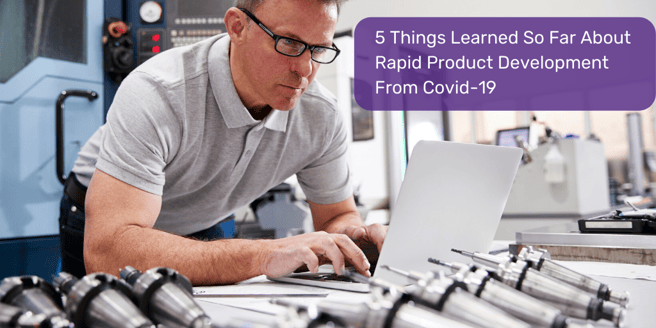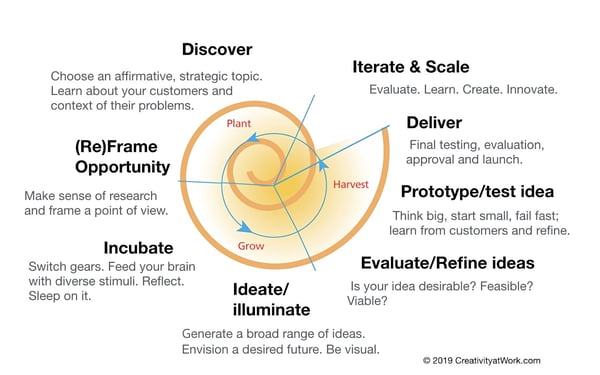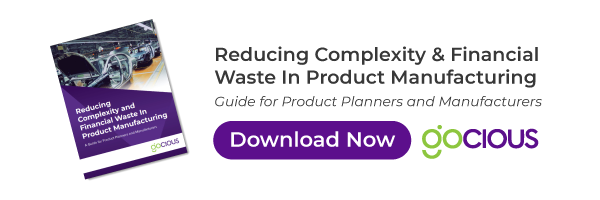 In the wake of COVID-19, companies like Dyson are trying to help the situation by retooling manufacturing to produce vital medical equipment and supplies. Companies like Medtronic are responding in-kind by releasing ventilator design specifications for free use.
In the wake of COVID-19, companies like Dyson are trying to help the situation by retooling manufacturing to produce vital medical equipment and supplies. Companies like Medtronic are responding in-kind by releasing ventilator design specifications for free use.
If you haven’t already started finding ways for your company to help, you may be able to learn from those that have. How have other companies been able to pivot so quickly?
Here are some of the lessons:
1) Design-led Innovation Process
Design-led innovation is an agile-based approach to problem solving. Dyson's action to team up with The Technology Partnership in Cambridge to produce 10,000 CoVent ventilators is an example of this. Dyson not only has a well documented design-led process, they make it freely available to anyone who wants it.
Another great example is University College London, who has teamed up with Mercedes Formula One. They are creating a breathing aid, much like the breathing aids sleep apnea patients use, which will help Coronavirus patients breath at home, rather than requiring ICU or hospital care.
According to the BBC, they explained the speed by stating "Normally medical device development would take years but we've done that in days because we went back to a simple existing device and "reverse engineered" it in order to be able to produce them quickly and at scale." Reverse engineering is really just one type of design led engineering.
Reducing Complexity & Financial Waste in Product Manufacturing
What YOU can do:
Consider implementing a design-led process in your organization. There are plenty of models, consultants, and agencies that can help get you started.
Check out Creativity at Work’s model below.

2) Have a list of Adjacencies Identified
What closely aligns with your production capabilities? Right now, we have distilleries making hand sanitizer and clothing businesses like Gap and Hanes brands making masks. No doubt the fact that rapid-fire news alerts about the desperate need made this obvious to them, but they already knew what their capabilities were and what they could make.
What YOU can do:
Look for product lines that are as similar as possible to what you already produce to make implementing the required changes to your product line faster and less burdensome. Make a list of these, and keep on the alert for needs in this area - even when it’s not an emergency, it might be an opportunistic sale.
3) Flexible Tools
If you have flexible tools, such as 3D printers, flexible assembly lines, or generic manufacturing processes, finding a way to address needs right now should be pretty straightforward. For example, Carbon, a 3D printing company, required little time to start producing testing swabs and personal protective gear.
Likewise, for those producing products that are flexible in their applications, like drones, there is tremendous value for drone companies to ramp up deploying them to help with deliveries and limit infection rates.
What YOU can do:
Make a list of all the possible deployments of your tools, and any known limitations. You don’t need to list every part you could make but you should put some general parameters around them like ‘smaller than a breadbox” to help your corporate or community response team know whether to even come to you for help.
4) Multidisciplinarity & Collaboration
Unfortunately, for companies working on a design, a lot of PLM tools are on designers' desktops or are on an on-premise solution. How can teams that are strewn together across states and the nation plan products needed quickly if they have to result in back and forth emails and clunky cloud share platforms?
Companies right now are collaborating with hospitals, government authorities, and other companies designing things they've likely never produced before. And time is of the essence. No one can afford to get designs and productions underway that are not going to work. That’s why Gocious incorporated real-time collaboration into the platform.
What YOU can do:
This is why Gocious incorporated real-time collaboration into our platform. Our solution is a cloud solution intended for designers and product planners. Our software does not require IT to set up. We enable a quick, secure, and efficient share space for teams to design in. Our platform brings people working from anywhere on the planet to a shared collaborative design space.
eBook: Reducing Complexity & Financial Waste in Product Manufacturing
5) Identify Capabilities Instead of Products
Right now, addressing crisis needs are not so much about innovating new products or things you can do. Or is it?
Scripps Research found that the Fitbit data they have can inform authorities of the spread of the virus by tracking such things as resting heart rates and sleep patterns.
New Orleans emergency responders have begun trialing an emergency response tool provided by company Carbyne, which uses self-surveillance by 911 callers. This technology helps 911 operators discern if a first responders is truly required. This helps reduce virus exposure.
These companies had capabilities as well as products. In these cases Fitbit could track body condition AND communicate it. Instead of communicating just to the wearer, they could communicate anonymized and aggregated data to the authorities. Carbyne already had the capability to request permission to use a cellphone’s GPS and camera.
What YOU can do:
Identify and catalog the core capabilities of your products and services. At its core, what is each thing? Is it about communicating, tracking, sensing, collating, integrating?
We strongly support the efforts of companies that already have started helping, and those that want to. For this reason we are offering our product planning software, which helps companies quickly pivot on production, for free use during this crisis.
Now more than ever, it is essential for us to step up and innovate products that meet our new ways of working, address the pandemic, and helps us recover from the economic downfall at a faster pace. Controlling complexity, defining products quickly, and focusing product development on features that truly meet the needs of the marketplace has never been more important.
To learn about reducing complexity and financial waste in product manufacturing, please download our new eBook below.
Additional Resources
Top 3 Pain Points Affecting Manufacturers & Product Planners
Manage Product Complexity & Increase Speed to Market
Tapping Into Customer Needs When Product Planning



